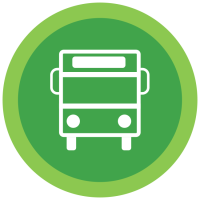Equitable Development Around Transit Recommendations Survey
Equitable Development Around Transit Recommendations Survey
In 2016, Wake County residents chose a future with greater freedom and choice of mobility than ever before. The decision to adopt and fund the Wake County Transit Plan represented the biggest investment in transit in the city’s history.
This choice will create, among other improvements, 20 miles of bus rapid transit service. It’s similar to light rail, where buses have their own lanes and where stations with raised platforms and pre-boarding fare payment mean riders simply step on the bus and go – like a metro station, not a bus stop.
BRT has the ability to increase access to job opportunities, encourage walkability and healthier lifestyles, and reduce carbon emissions. Maximizing the benefit of BRT also means thinking about the areas near stations – and how Raleigh grows.
Historically, Raleigh has grown mainly around driving. For the last several decades, most new housing has been built at the fringes of the city. Over time, commutes grew ever longer. That has meant increased interest in living in walkable, high-opportunity areas. BRT offers the opportunity to think about growing more around transit and walking than in places where driving is the only option.
This survey presents two packages of recommendations designed to address primary goals of the Equitable Development Around Transit study, as defined through public input. We would appreciate your feedback as to how well these recommendations help us achieve these goals. The survey takes about five minutes to complete.
What we’ve heard: Public input in this process has strongly supported the idea that Raleigh should grow much more around transit and walking than it has in the past. In surveys and workshops, participants overwhelmingly selected the most “grow around transit” option. They indicated that it is very important to reduce carbon emissions by allowing more people to live in work in walkable places near transit.
In response to what we’ve heard, the EDAT plan recommends:
- Allow additional height around BRT stations, including up to 12 stories in the core of "Emerging Urban Centers." In the larger of these centers, such as New Bern Avenue east of 440, heights of up to 20 stories could be appropriate. In smaller areas ("Neighborhood Centers"), height in core station areas could go up to seven stories. In both cases, heights would transition down to the lower-scale areas nearby.
- Prioritizing sidewalk projects within a half mile of BRT
- Addressing traffic speeds and unsafe intersections
- Creating bike/scooter lanes to link to BRT stations
- Encouraging pedestrian-friendly design and a mix of uses in BRT areas
What we’ve heard: The other key goal of this project is contained in the word “Equitable.” That means ensuring that residents of all income levels share in the benefits of the investment in transit and avoiding displacement in neighborhoods along the BRT routes. Public input in this process made it clear that equity considerations are critical, with participants strongly indicating that ensuring housing affordability near BRT stations is important.
In response to this choice, the EDAT plan recommends:
- Directly creating more affordable units by acquiring land near BRT stations
- Creating a zoning bonus that allows more building height if affordable units are provided
- Allowing more housing to be built, minimizing competition for existing homes
- Creating an “equity fund” that takes a portion of tax revenue from new development along the corridors and plows it back into affordability and other equity projects
- Expanding rehab and property tax assistance for existing residents along the corridors
- Expanding efforts to crack down on predatory purchases
- Expanding programs for supporting small businesses along the corridors
